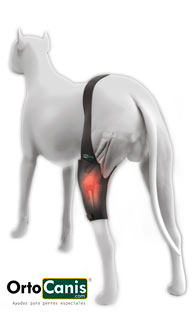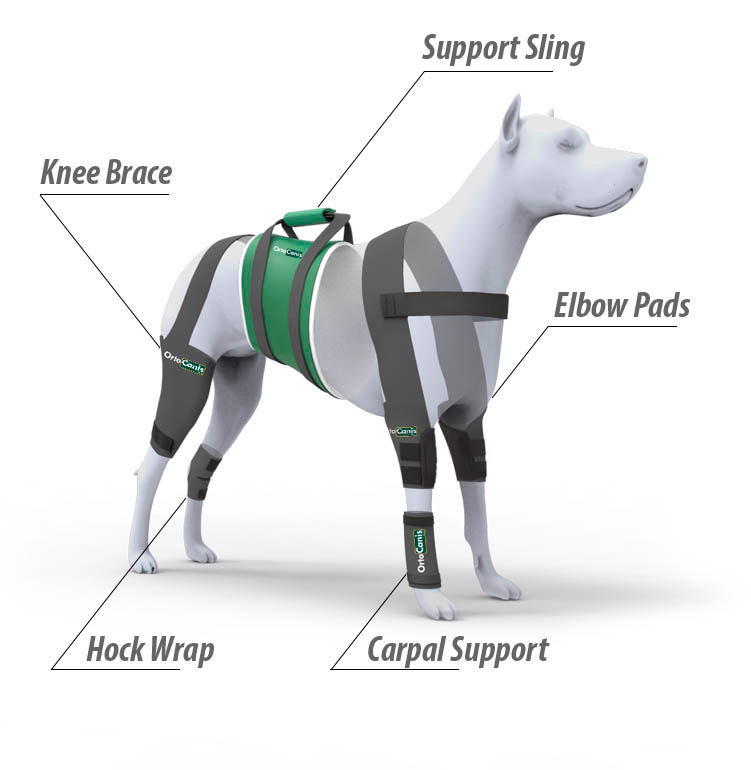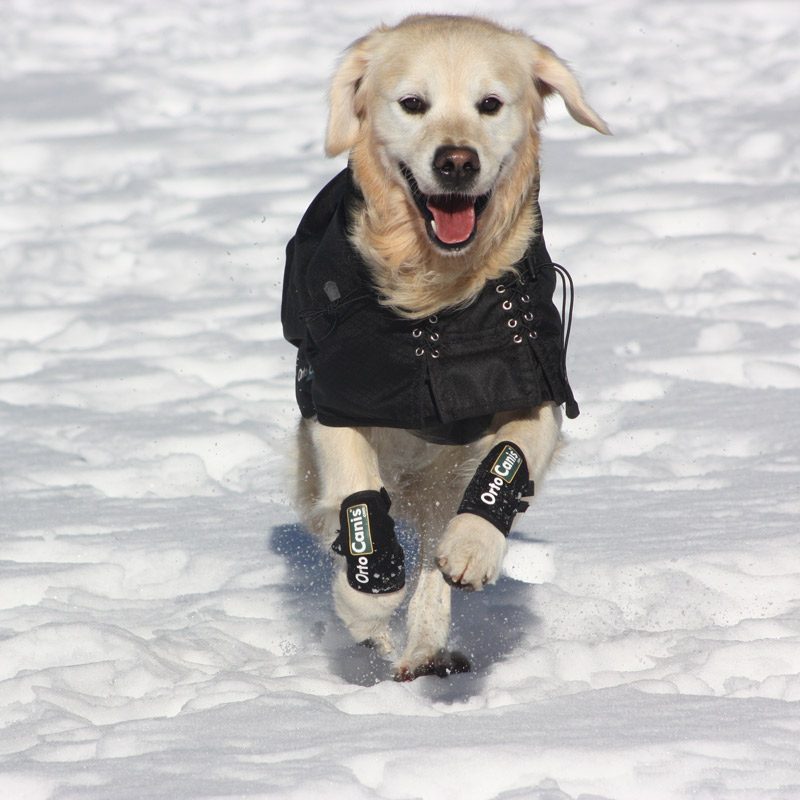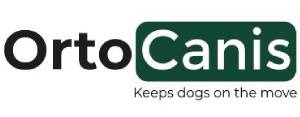The Osteoarthritis is a very common degenerative joint disease in dogs. It’s caused by the wear and tear of the cartilage in the joints, causing pain and inflammation of the affected areas as well as a decreased range of motion.
The symptoms worsen with the arrival of the cold and especially in more humid climates. Dogs with osteoarthritis suffer the most in autumn and winter and as a result additional measures need to be taken during these seasons to alleviate the pain.
 There are two types of osteoarthritis: primary and secondary. The primary is degenerative and can affect more than one joint and is a result of age and “wear and tear” on the joints that happens over time. These are the typical knee, carpal, tarsal and even spine osteoarthritis. The secondary types of osteoarthritis are caused by a joint misalignment that has prematurely worn down the articular cartilage. These occur for various reasons, like after a fracture, especially if it has affected the joints. They may also be caused by bad joint disposition, for example if the dog has bad feet and legs it will prematurely wear down the cartilage. Another more common case of secondary osteoarthritis is a consequence of hip dysplasia.
There are two types of osteoarthritis: primary and secondary. The primary is degenerative and can affect more than one joint and is a result of age and “wear and tear” on the joints that happens over time. These are the typical knee, carpal, tarsal and even spine osteoarthritis. The secondary types of osteoarthritis are caused by a joint misalignment that has prematurely worn down the articular cartilage. These occur for various reasons, like after a fracture, especially if it has affected the joints. They may also be caused by bad joint disposition, for example if the dog has bad feet and legs it will prematurely wear down the cartilage. Another more common case of secondary osteoarthritis is a consequence of hip dysplasia.
There are various suggestions for both primary and secondary osteoarthritis:
- Strict diet control: The dog should be at an ideal weight, if the dog is overweight the joints will suffer wear and tear of the cartilage significantly more.
- Natural anti-inflammatories: We recommend, whenever possible, treating the inflammation and pain with natural solutions that don’t have side effects. If we decide to administer medication, we will choose the INES cox-2, the new generation non-steroidal anti-inflammatory drugs with far fewer side effects and a more direct action towards the areas with pain.
- Nutritional joint protectors: MSM (methylsulfonylmethane), omega-3(EPA+DHA), Glycosaminoglycans, chondroitin sulfate and cartilage supplements, to prevent the wear and tear of the joint cartilage. These also don’t have side effects and are a good preventative measure that will avoid having to take so many anti-inflammatories in the future ...
- Regular exercise: It is very important that the dog does not lose too much muscle mass. Normally, dogs with osteoarthritis have weak muscles from lack of use. This weakness and muscular atrophy will aggravate the symptoms. It is therefore necessary to keep the muscles in good condition and it can even be beneficial to do physical therapy exercise in order to strengthen certain groups of muscles.
- Orthopedic joint protectors: Highly recommended. Their primary function is twofold. On the one hand they play a preventative role, protecting and preventing the wear in the cartilage of several of the dog’s joints. On the other hand, they have a healing role and can alleviate and accelerate recovery from injuries that may already be present. Thus the braces are particularly suitable for cases of osteoarthritis located in the elbows, hips, knees, carpus and hocks. These supports give the animal greater stability and keep the joint warm. This improves the oxygenation and circulation conditions of the affected area, reducing pain and inflammation and contributing to a better quality of life.
- When the dog starts to present joint problems, the most immediate symptoms are limpness or stiffness of the affected areas. Often it can be detected early on due to the dog’s inability to complete exercises, train or a compete. The protectors are also used to warm up the muscles before exercising or physical activity, therefore eliminating the risk of strains and fibril breakage.
As time passes, the symptoms become more apparent and we can see the mobility limitations even when the animal has not exercised. Therefore it is recommended that we use the elbow, hip, knee, carpus or hock braces from the first indication of joint pain.
- Sleep on orthopedic mattress or heated thermal mattresses away from humidity to optimize resting time and the resting conditions of the joints.
- Avoid exposure to cold and sudden changes in temperature: blankets and waterproof thermal jackets to protect against the cold and humidity can help. Back on Track are made in Sweden and have been developed based on knowledge of traditional Chinese medicine together with modern research. The fabric is made from an optimal fusion of polyester/polypropylene and ceramic particles. The ceramic particles reflect body heat, returning it as infrared radiation. This increases the temperature, promoting circulation and creating a calming, anti-inflammatory and regenerating effect.
Photo: Back on Track Thermal Jacket protects
from cold and moisture by reflecting animal's
own infrared heat.
Ortocanis Veterinary Team



